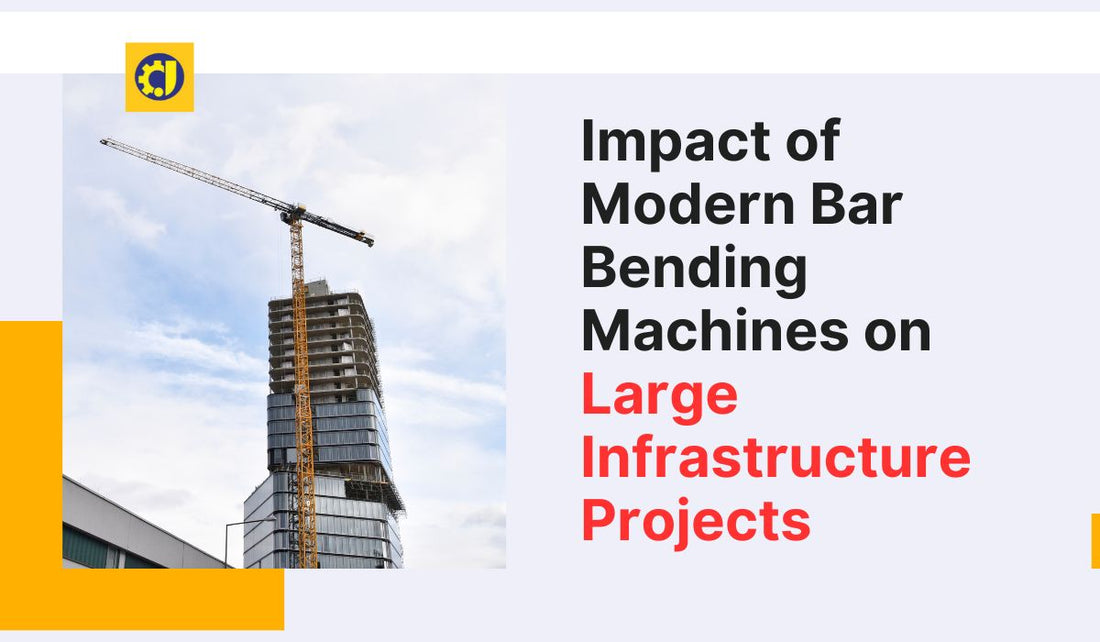
Impact of Modern Bar Bending Machines on Large Infrastructure Projects
Infrastructure development is at the heart of progress in any growing nation. From highways and bridges to metro rails and airports, these projects demand precision, speed, and strength. In recent years, one tool has transformed the construction industry — the bar bending machine. It plays a key role in enhancing productivity and accuracy in large-scale construction.
Why Precision Matters in Infrastructure Projects
Accuracy is everything in infrastructure. When large amounts of steel bars are used, even a small mistake in bending can lead to costly delays or safety risks. That’s where modern machines make a huge difference. Unlike manual bending, machines reduce human error and ensure uniform bends every time.
Evolution of Bar Bending Technology
Initially, steel bar bending was done manually using hand tools. Although simple, this method was time-consuming and lacked precision. Over time, semi-automatic machines became popular. Now, with fully automatic bar bending machines, construction companies can handle large volumes quickly and accurately.
Benefits of Using Modern Bar Bending Machines
One of the biggest advantages is speed. A modern machine can bend dozens of bars in minutes, something that used to take hours. Moreover, it also saves labor costs. Additionally, consistent bending improves the quality and durability of structures. As a result, projects are completed faster and within budget.
Increased Safety on Construction Sites
Manual bar bending is not just slow—it’s also risky. Workers are exposed to injuries like cuts, strains, and accidents. In contrast, automatic machines are safer. With less manual handling involved, the chances of workplace injuries are greatly reduced. This not only protects workers but also improves overall site safety.
How Automation is Driving Productivity
Today’s construction demands tight deadlines. Thanks to automation, workers can focus on other important tasks while the bar bending machine does the heavy lifting. The machines come with degree setting features that allow operators to bend bars of different angles with the push of a button.
Cost Savings Over Time
Although the initial investment in machines can be high, the long-term savings are undeniable. Faster production means fewer delays. Moreover, fewer errors lead to less material wastage. Over time, the return on investment becomes clear, especially on large infrastructure projects where every second counts.
Supporting Complex Architectural Designs
Modern infrastructure is not just about strength; it’s also about design. Buildings now come with curves, arches, and unique shapes. Achieving these with manual bending is tough. With modern machines, bending bars into complex shapes becomes easy and efficient, giving architects more freedom to innovate.
Integration with Digital Tools
In today’s smart construction sites, machines are often connected to digital systems. Some bar bending machines are now integrated with software that allows engineers to send bending instructions directly. This reduces miscommunication and increases accuracy, saving valuable time and effort.
Better Resource Management
When machines handle the heavy work, fewer workers are needed for bar bending. This allows project managers to allocate human resources more efficiently. Skilled workers can be moved to other critical tasks, improving overall workflow and productivity across the site.
Faster Project Completion
Finishing projects on time—or ahead of schedule—matters. With faster bar processing, other parts of the project can also move ahead without delay. This not only saves money but also builds a reputation for reliability and efficiency, which is crucial for winning future contracts.

Sustainable Construction Practices
Wastage of materials is a common issue in large projects. However, machines ensure accurate cutting and bending, reducing scrap. With less steel waste, companies contribute to more sustainable construction practices. This aligns with global efforts to reduce the carbon footprint of large-scale infrastructure.
Adaptability to Different Project Sizes
Whether it’s a small bridge or a massive dam, modern bar bending machines can be adjusted to meet different project requirements. Their flexibility allows them to handle different bar diameters and bending angles, making them ideal for diverse construction needs.
Training and Ease of Use
You might think these machines are hard to operate. However, most modern machines are designed with user-friendly controls. With a few days of training, workers can easily learn to operate them. This reduces dependence on highly skilled labor and shortens the learning curve.
Long-Term Reliability
Finally, modern machines are built to last. Made with durable materials and tested for heavy use, they offer long-term reliability. With proper maintenance, they continue to perform efficiently across multiple projects, making them a smart investment for any construction company.
Final Thoughts
In conclusion, the impact of modern bar bending machines on infrastructure projects is undeniable. From increased speed and precision to improved safety and lower costs, these machines have changed the game. As technology continues to advance, we can only expect their role to grow even further in shaping the cities and bridges of tomorrow.